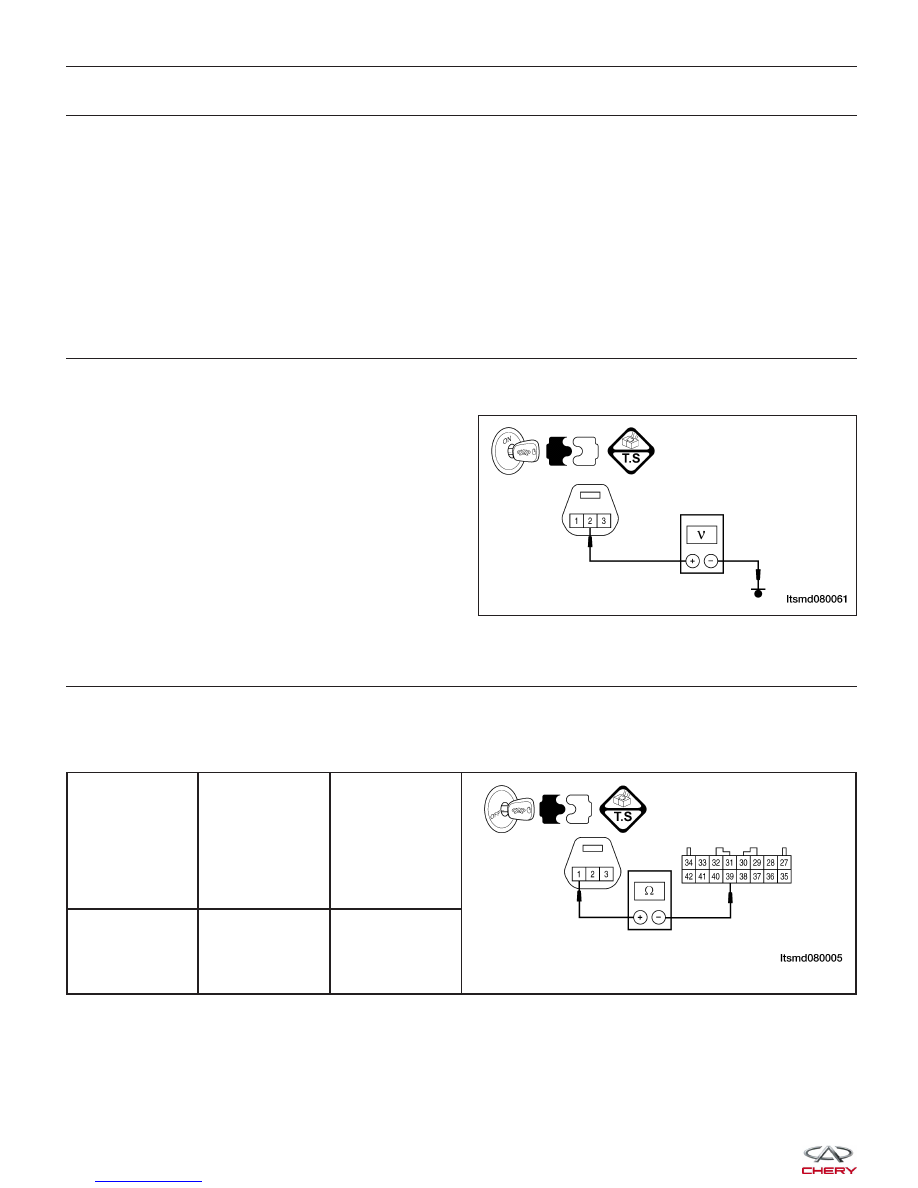Chery Tiggo. Manual - part 278

3.
DETECT MALFUNCTIONING PART
• Check the following:
− Harness connectors A-102, E-105
− Body fuse and relay box H13
− Fuse 3 (10A)
− Harness open or short between input shaft speed sensor and fuse
Is the check result normal?
Yes
>>
Go to the next step.
No
>>
Repair or replace the open circuit or short to ground or short to power in harness or connectors.
4.
CHECK INPUT SHAFT SPEED SENSOR SIGNAL CIRCUIT
• Check sensor signal circuit between sensor terminal 2 and ground in the sensor electrical connector E-088.
• 5 V should exist.
Is the check result normal?
Yes
>>
Go to the next step.
No
>>
Repair or replace open circuit or short to
power or short to ground.
5.
CHECK INPUT SHAFT SPEED SENSOR GROUND CIRCUIT
• Turn the ignition switch off.
• Disconnect TCM connector.
• Check for harness continuity between the following terminals:
INPUT SPEED
SENSOR
CONNECTOR
TERMINAL
TCM
CONNECTOR
TERMINAL
CONTINUITY
1
39
Yes
• Check the harness for short to power and short to ground.
Is the check result normal?
Yes
>>
Go to the next step.
No
>>
Repair or replace open circuit or short to power or short to ground.
DIAGNOSIS & TESTING
LTSMD080061